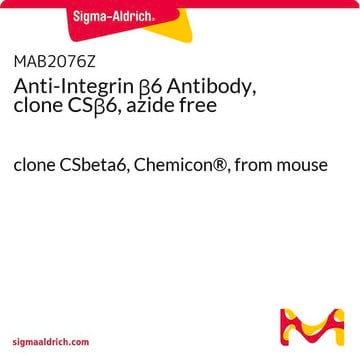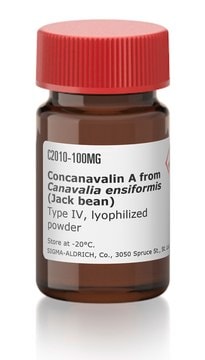AB1920
Anti-Integrin α3 Antibody
serum, Chemicon®
Synonym(s):
CD49c
About This Item
Recommended Products
biological source
rabbit
Quality Level
antibody form
serum
antibody product type
primary antibodies
clone
polyclonal
species reactivity
porcine, rat, goat, canine, sheep, hamster, equine, pig, bovine, human, mouse, chicken, horse
manufacturer/tradename
Chemicon®
technique(s)
ELISA: suitable
immunofluorescence: suitable
immunohistochemistry: suitable
immunoprecipitation (IP): suitable
radioimmunoassay: suitable
western blot: suitable
NCBI accession no.
UniProt accession no.
shipped in
wet ice
target post-translational modification
unmodified
Gene Information
human ... ITGA3(3675)
General description
Specificity
Immunogen
Application
A 1:1,000 dilution of a previous lot was used in Enzyme-linked Immunosorbent Assay/Radioimmunoassay.
Immunoprecipitation:
5 µL of a previous lot precipitated alpha3/beta1 from 5 x 106 cells (Sherry, D.M., 2001).
Immunohistochemistry/immunofluorescence:
1:500 dilution of a previous lot was used, suggest use on acetone-fixed tissue.
Western Blot Analysis:
1:500 dilution of a previous lot was used.
Optimal working dilutions must be determined by end user.
Quality
Western blot: 1:500 dilution of this lot detected INTEGRIN ALPHA 3 on 10 μg of A431 lysates.
Target description
Linkage
Physical form
Analysis Note
Human fetal foreskin fibroblasts (HFFF), neuroblastomas
Other Notes
Legal Information
Not finding the right product?
Try our Product Selector Tool.
recommended
Storage Class Code
10 - Combustible liquids
WGK
WGK 1
Certificates of Analysis (COA)
Search for Certificates of Analysis (COA) by entering the products Lot/Batch Number. Lot and Batch Numbers can be found on a product’s label following the words ‘Lot’ or ‘Batch’.
Already Own This Product?
Find documentation for the products that you have recently purchased in the Document Library.
Our team of scientists has experience in all areas of research including Life Science, Material Science, Chemical Synthesis, Chromatography, Analytical and many others.
Contact Technical Service




